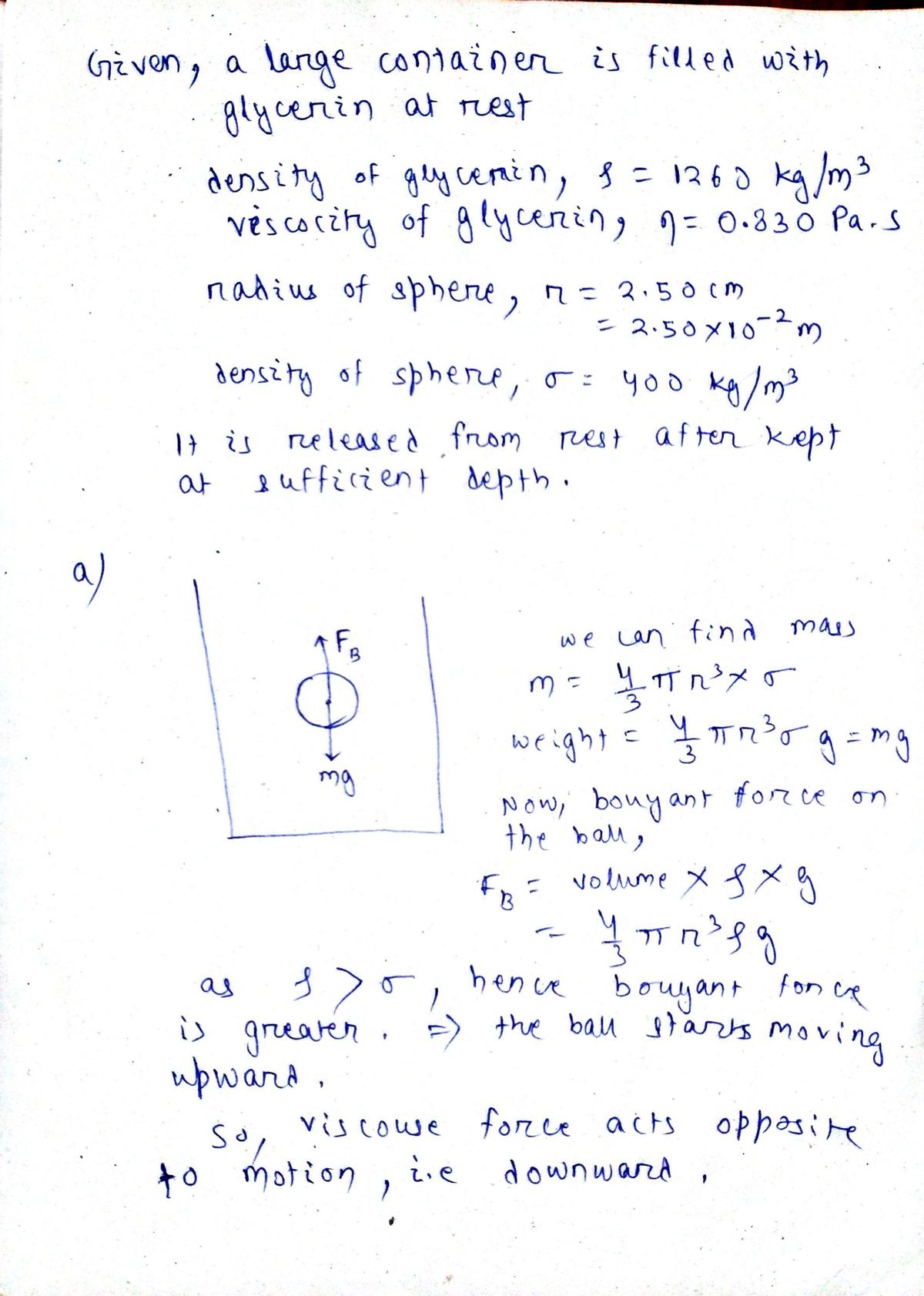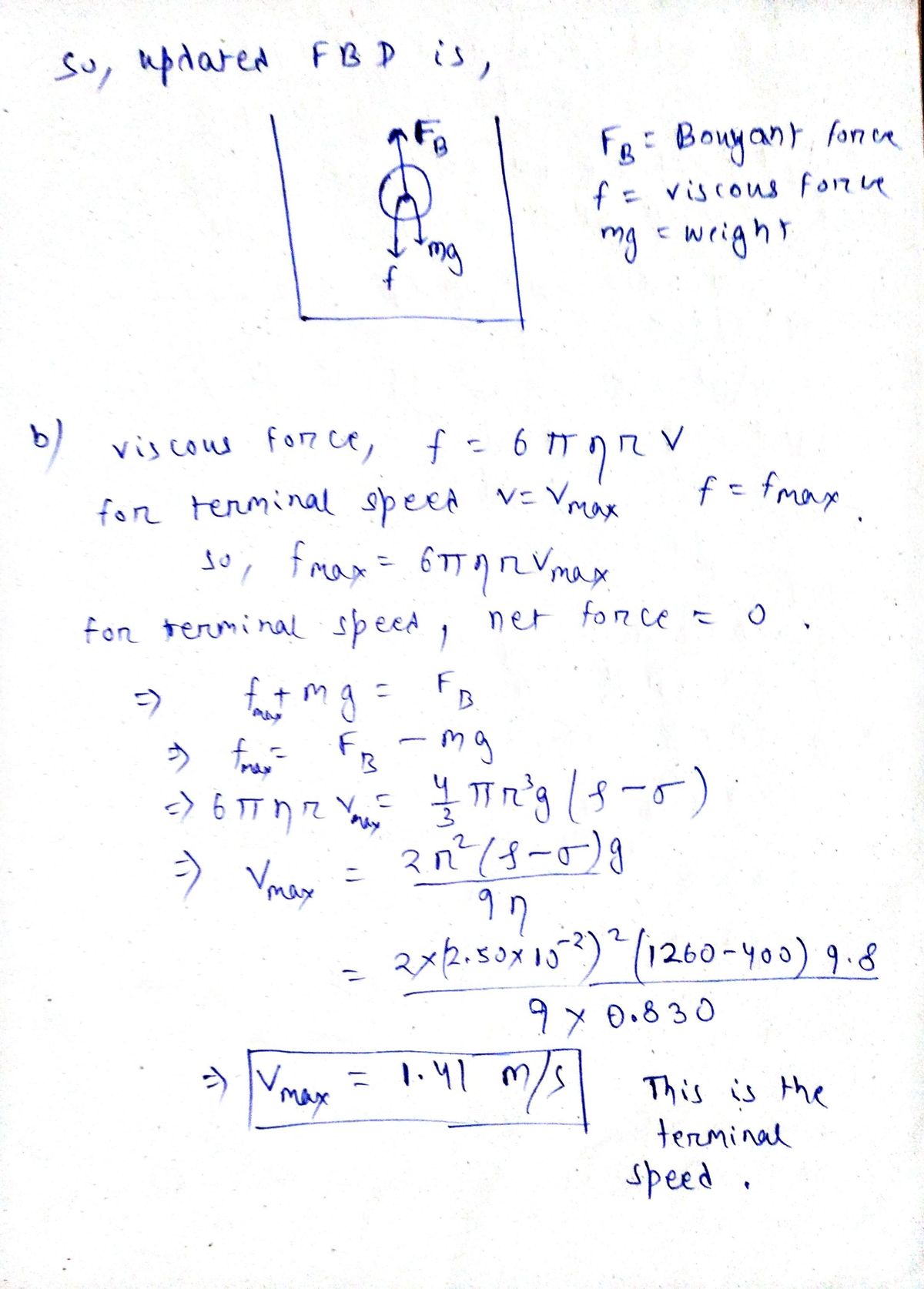Inside a large container filled with glycerin at rest, which has a density p=1260 kg/m³ and a viscosity n=0.830 Pa's, a sphere with a radius of 2.50 cm is inserted to a sufficient depth, made of a material whose density is 400 kg/m³, and is released from rest. Under these conditions: a. Draw a free-body diagram, showing all the forces the sphere is subjected to as it moves in the fluid, and indicate the direction of motion. b. Determine the terminal speed of the sphere and calculate the acceleration of the sphere when its speed is half its terminal speed. c. Suppose the sphere is now placed in an oil whose viscosity and density at room temperature are less than those of glycerin (poil-875 kg/m³ y noil-0.255 Pa's). What happens to the terminal speed of the sphere: does it increase, decrease, or stay the same? Justify your answer.
Fluid Pressure
The term fluid pressure is coined as, the measurement of the force per unit area of a given surface of a closed container. It is a branch of physics that helps to study the properties of fluid under various conditions of force.
Gauge Pressure
Pressure is the physical force acting per unit area on a body; the applied force is perpendicular to the surface of the object per unit area. The air around us at sea level exerts a pressure (atmospheric pressure) of about 14.7 psi but this doesn’t seem to bother anyone as the bodily fluids are constantly pushing outwards with the same force but if one swims down into the ocean a few feet below the surface one can notice the difference, there is increased pressure on the eardrum, this is due to an increase in hydrostatic pressure.
See the physics problem in the picture



Step by step
Solved in 3 steps with 4 images









